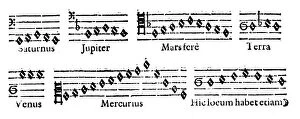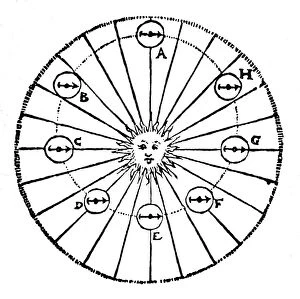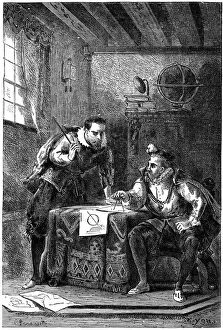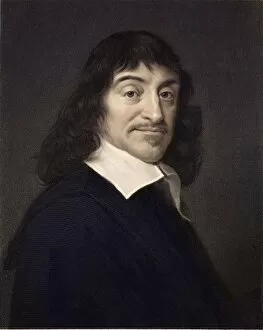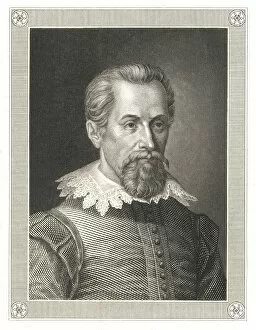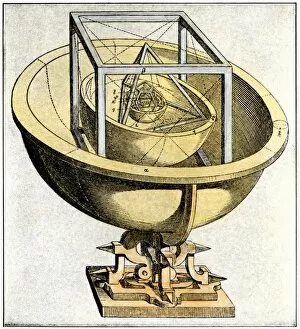Planetary Motion Collection
"Unraveling the Mysteries of Planetary Motion: A Journey through Kepler's Discoveries" Step into the world of planetary motion
All Professionally Made to Order for Quick Shipping
"Unraveling the Mysteries of Planetary Motion: A Journey through Kepler's Discoveries" Step into the world of planetary motion, where Isaac Newton and gravity reign supreme. In this captivating chromolitho, we delve into Johannes Kepler's groundbreaking explanations that revolutionized our understanding of the structure of the planetary system. In 1619, Kepler unveiled his remarkable concept known as "Music of the Spheres, " a harmonious symphony created by celestial bodies moving in perfect rhythm. This visionary idea paved the way for further exploration and inspired generations to unravel nature's secrets. Kepler's early 16th-century revelation introduced an attractive force from the Sun – a virtue that pulls planets towards it. With his brilliant mind at work, he illustrated his discovery of Mars' elliptical orbit in 1609, forever changing our perception of celestial movements. As we gaze upon these historical images from c1903 and c1870, we witness Johannes Kepler himself - a German astronomer whose contributions continue to shape our understanding today. Collaborating with Tycho Brahe in their pursuit of knowledge during their time together around 1600, they left an indelible mark on astronomical research. The Transit of Venus in 1639 captured by artist Johannes Hevelius showcases not only its artistic beauty but also highlights how astronomers throughout history have strived to capture rare cosmic events for scientific study. Johannes Kepler (1571-1630), a renowned mathematician and astronomer, dedicated his life to unraveling the mysteries hidden within space itself. His tireless efforts are immortalized in these stunning images from c1835 and Astronomy Diagrams C017 / 3530 – testaments to his unwavering commitment to expanding human knowledge. Join us on this mesmerizing journey through time as we explore Johannes Kepler's profound discoveries about planetary motion. Let us marvel at how one man's brilliance forever altered our perception of the cosmos, leaving an enduring legacy for generations to come.



